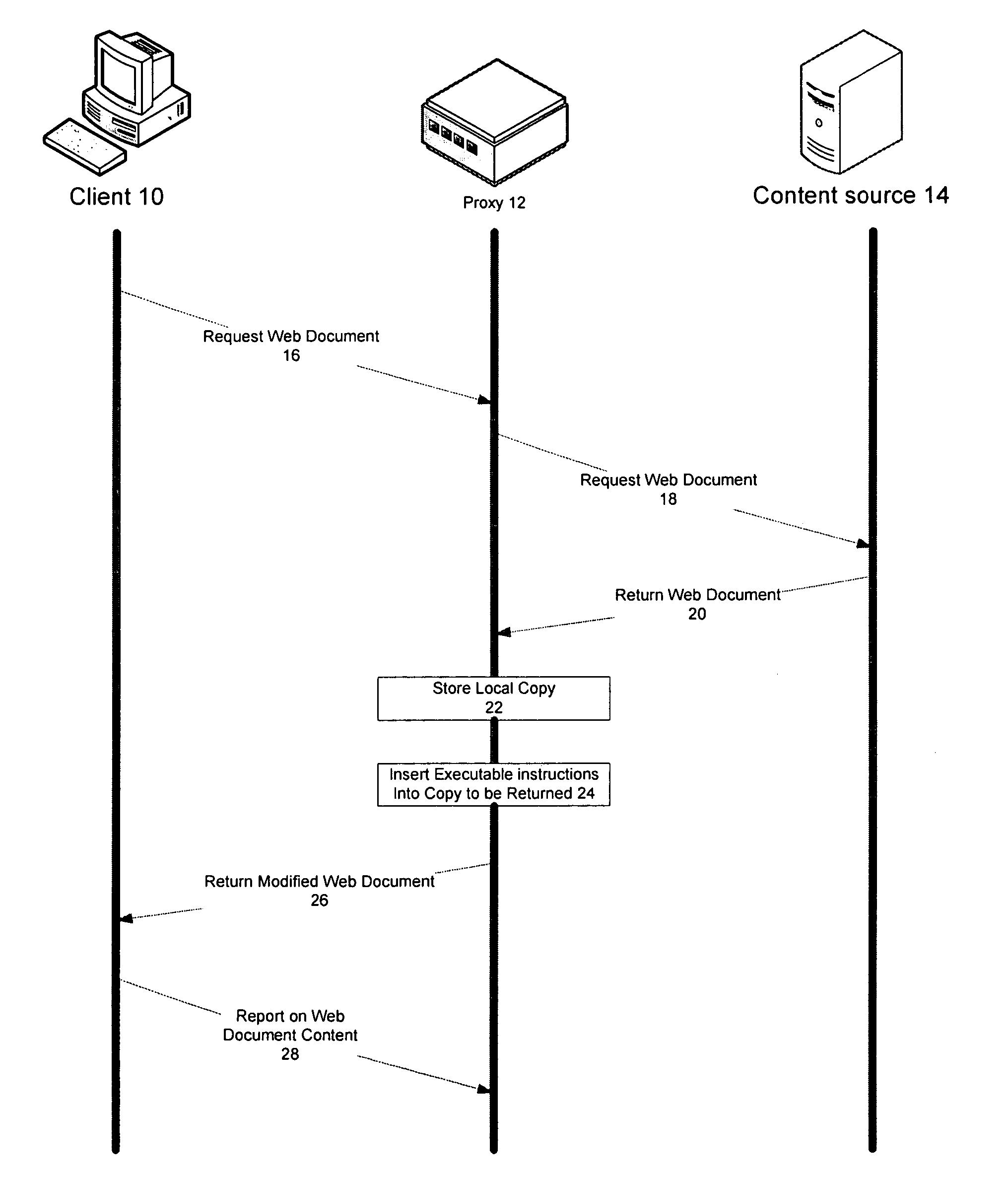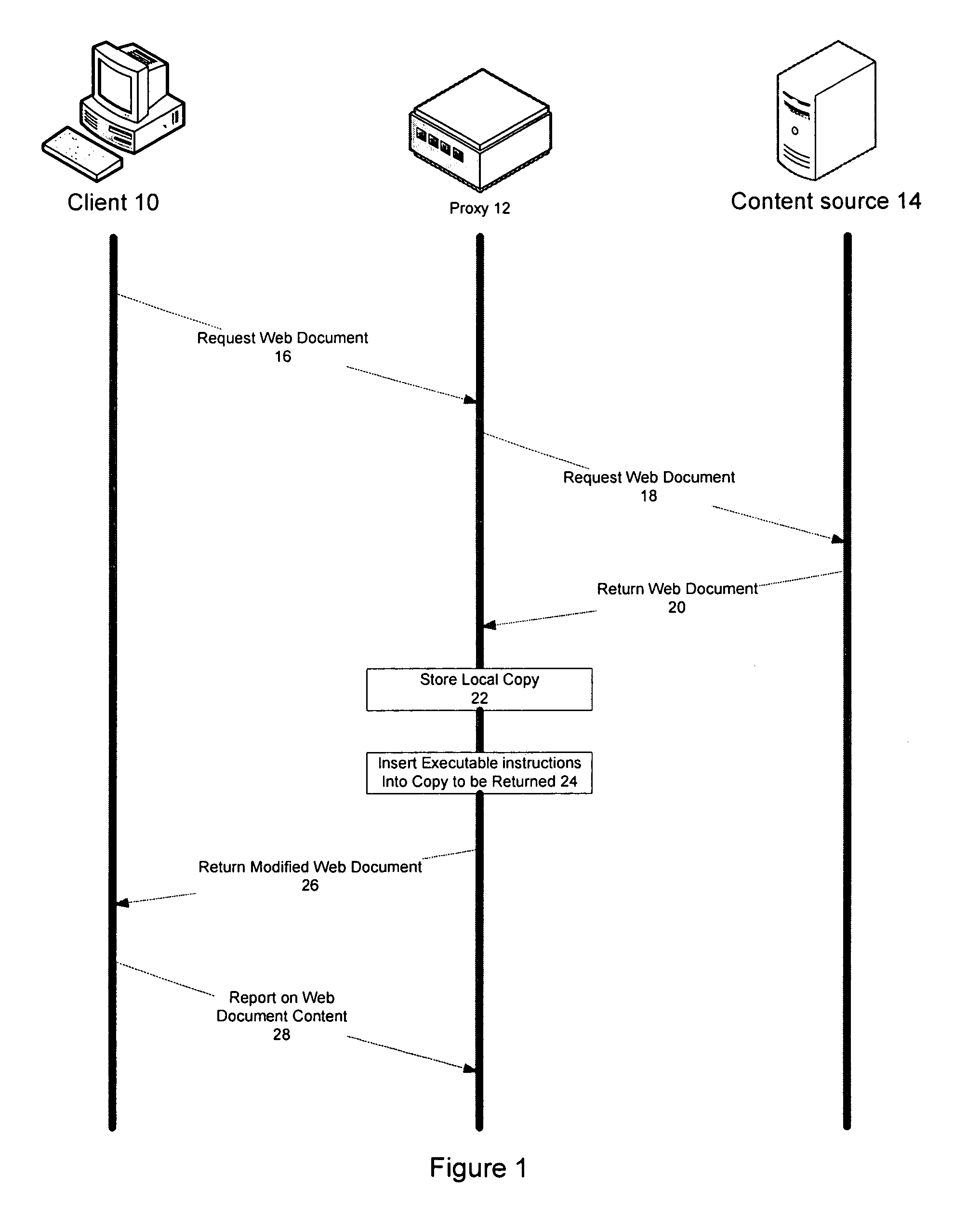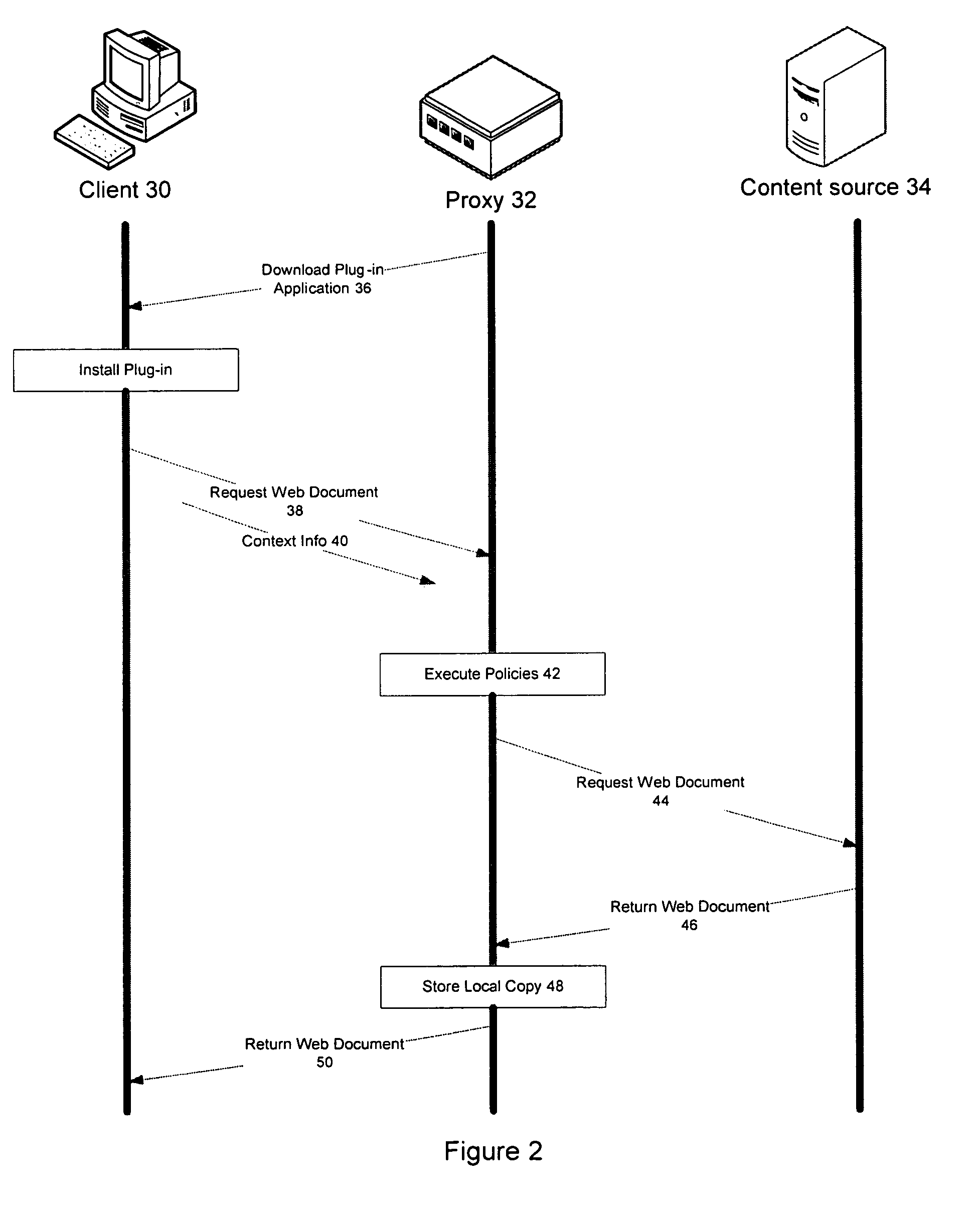Client-side extensions for use in connection with HTTP proxy policy enforcement
a client-side extension and proxy policy technology, applied in the field of proxy servers, can solve the problems of blocking requests (or returned images), affecting the enforcement of proxy policies, and difficult (or impossible) to enforce these rules,
- Summary
- Abstract
- Description
- Claims
- Application Information
AI Technical Summary
Benefits of technology
Problems solved by technology
Method used
Image
Examples
Embodiment Construction
[0018]Described herein are methods and systems to facilitate the enforcing of policies with respect to traffic in a computer network and, more particularly, methods and systems for provisioning client applications such as Web browsers to perform various actions related to such enforcement activities. The present methods and systems provide for cooperation between proxy servers and clients serviced thereby to manage tasks associated with such policy enforcement. In some cases, client applications are tasked with performing certain activities to assist the proxy in performing policy enforcement. In other instances, clients are instructed to report information to a proxy so as to better facilitate the policy enforcement. These various embodiments of the present invention are described in detail below, however, such examples are not meant to limit the broader scope of the inventions as reflected in the claims following this description.
[0019]Along these lines, various embodiments of the...
PUM
 Login to View More
Login to View More Abstract
Description
Claims
Application Information
 Login to View More
Login to View More - R&D
- Intellectual Property
- Life Sciences
- Materials
- Tech Scout
- Unparalleled Data Quality
- Higher Quality Content
- 60% Fewer Hallucinations
Browse by: Latest US Patents, China's latest patents, Technical Efficacy Thesaurus, Application Domain, Technology Topic, Popular Technical Reports.
© 2025 PatSnap. All rights reserved.Legal|Privacy policy|Modern Slavery Act Transparency Statement|Sitemap|About US| Contact US: help@patsnap.com



